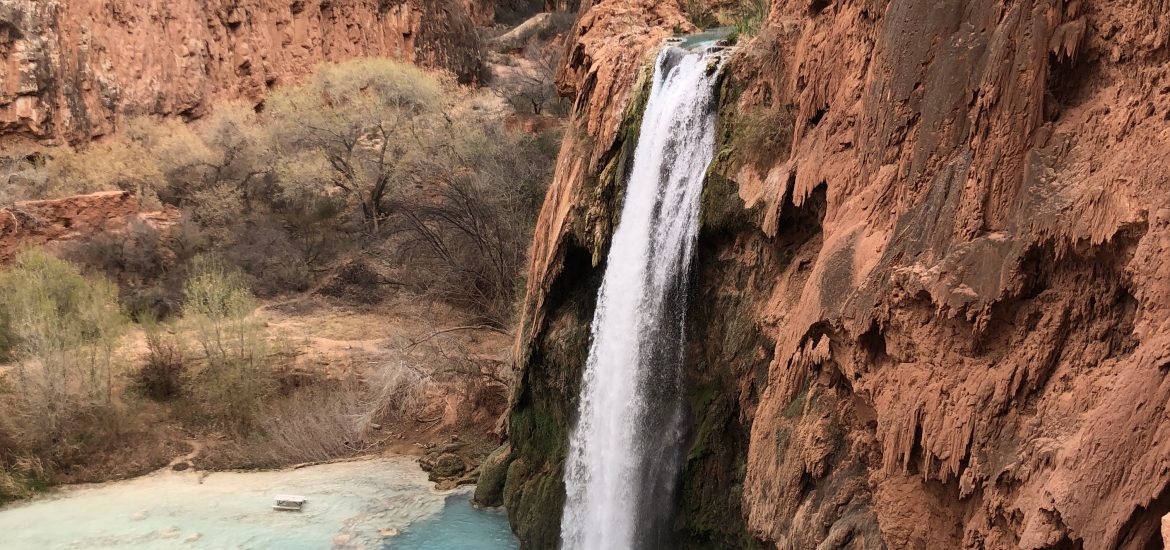You’ve probably seen photographs floating around the internet of incredible blue-green waterfalls crashing over high cliffs against the colorful backdrop of the Grand Canyon. You might assume the pictures are enhanced. Nothing could be that color. But it can, and it is at Havasupai.
On an earlier trip to trek to Phantom Ranch in the Grand Canyon, I met a fellow hiker who had made the journey to this unearthly landscape, and he swore that the water was that color. It was even better in person.
I knew then that I needed to visit Havasupai and see these waterfalls for myself.
A quick internet search revealed that reservations and permits were difficult to obtain, opening up on a specific day each year and selling out within hours. Backpacking and camping equipment is necessary unless lodge accommodations in the village of Supai are secured.
Opting for a guided hike left nothing to chance with permitting. In February, I arrived at Sky Harbour International Airport to make my way to Flagstaff, Arizona, to meet my fearless leader, Emily.
Checking into the hotel, I prepare for my meeting with Emily.
Wildland Trekking provided me with a comprehensive list of gear to bring, and I begin putting the necessary items into the backpack that I’ll carry,
Emily, an accomplished hiker who has backpacked over 3,500 miles, including a thru-hike of the Appalachian Trail, meets me in the lobby to answer questions, go over gear, and talk a little about where we’re going. It’s just the two of us, and we agree to meet at 6:30 AM to make the 3-hour drive to the Hualapai Hilltop, where our ten-mile journey to the Falls will begin.
We exit I-40 passing through Seligman, a tiny town that served as inspiration for the animated film Cars, located on Route 66. We stop for the last real coffee and then make our way along two-lane highways through the tribal land to the Hilltop.
Arriving at Hualapai Hilltop, the gateway to Havasupai, we leave our camping gear and food by a shipping container, keeping only our backpacks, lunch, snacks, and water transported via horse by the tribe.
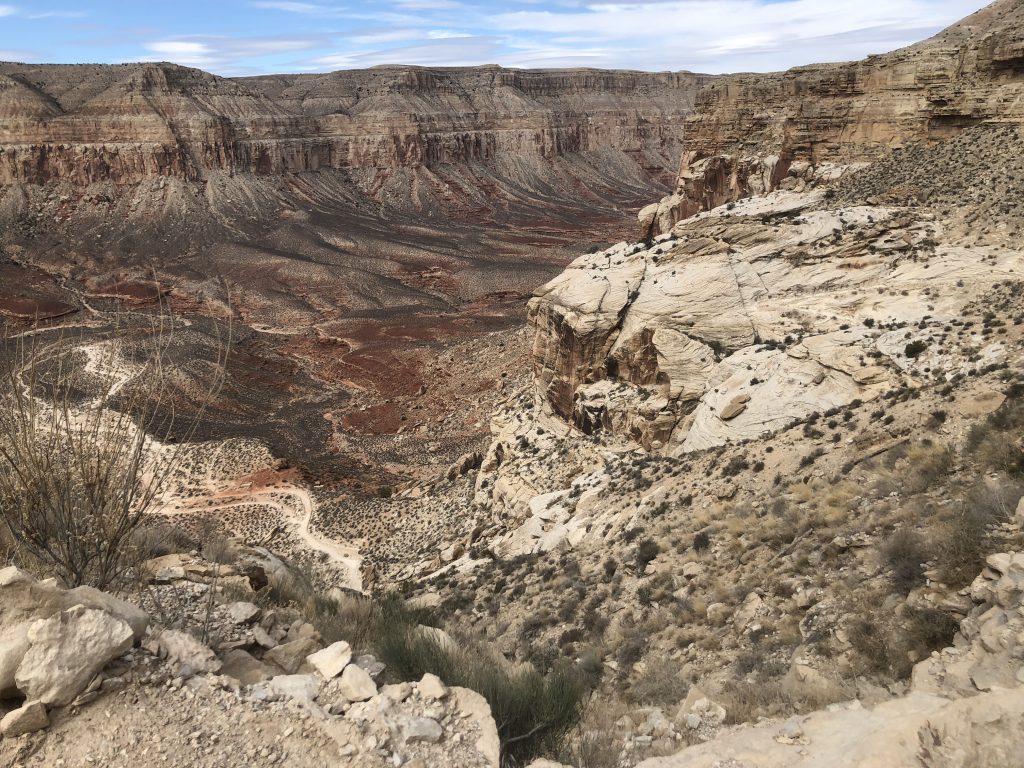
There’s a helicopter pad, some outhouses, and the trailhead. Descending along the rocky switchbacks, we begin the 8-mile trek to the village of Supai, where we’ll check-in and then make our way to the falls, another two miles or so.
The switchbacks are only about a mile and a half long, and then the trail levels out. It’s rocky and sandy, at times almost like moon dust. Progressing down the canyon, the walls grower higher, and the canyon narrows. Emily points at various markings along the way and talks about the history and the geology of the land.
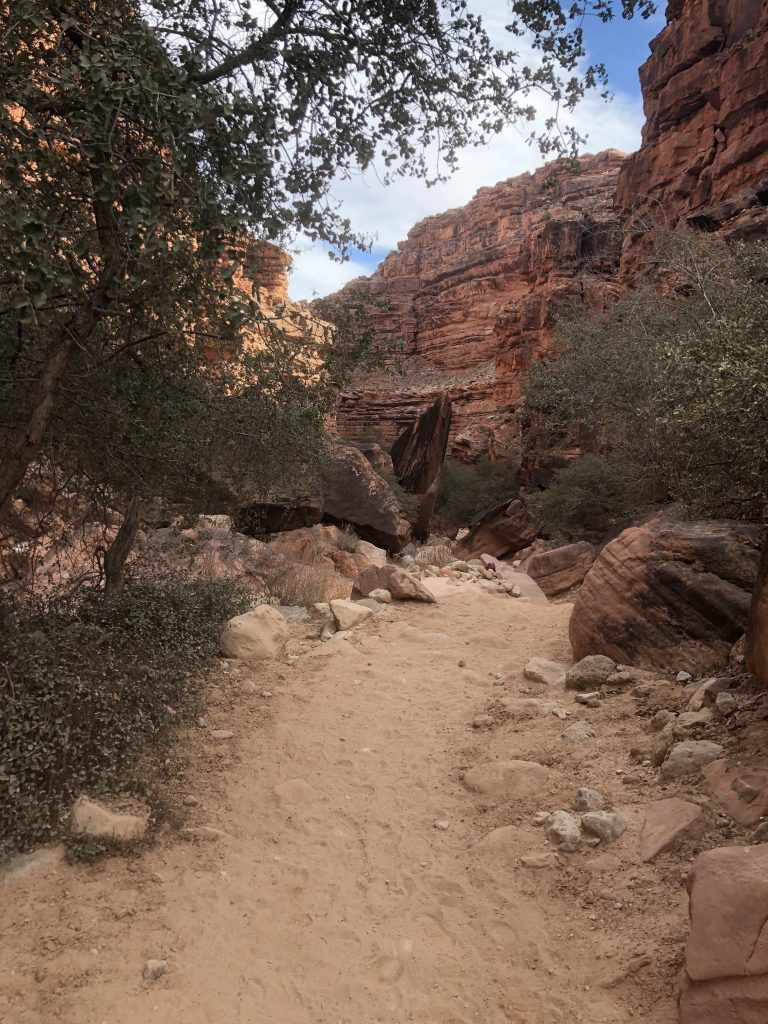
Stopping at the midway point for lunch, we set up a small picnic on some rocks to enjoy. A large black crow hovers overhead, hoping for a scrap. Continuing, we begin seeing some greenery and vegetation as we get closer to the village of Supai. Supai has been referred to as “the most remote community” in the contiguous United States by the US Department of Agriculture and is the Havasupai’s capital (which means people of the blue-green water) Indian Reservation.
The people of Supai don’t like to be photographed and ask that no pictures be taken in the village.
I ask Emily if the tribe has a love/hate relationship with the hikers, and she replies that it’s more like tolerate/hate. Tourism is the primary source of income for the tribe.
I’ve been warned that people may not talk to me, but a gentleman strikes up a conversation while I’m resting on a bench in front of the small general store. He asks about the hike and tells me about his job delivering the mail. He talks about life in the village, and I thank him, expressing gratitude for being allowed to visit.
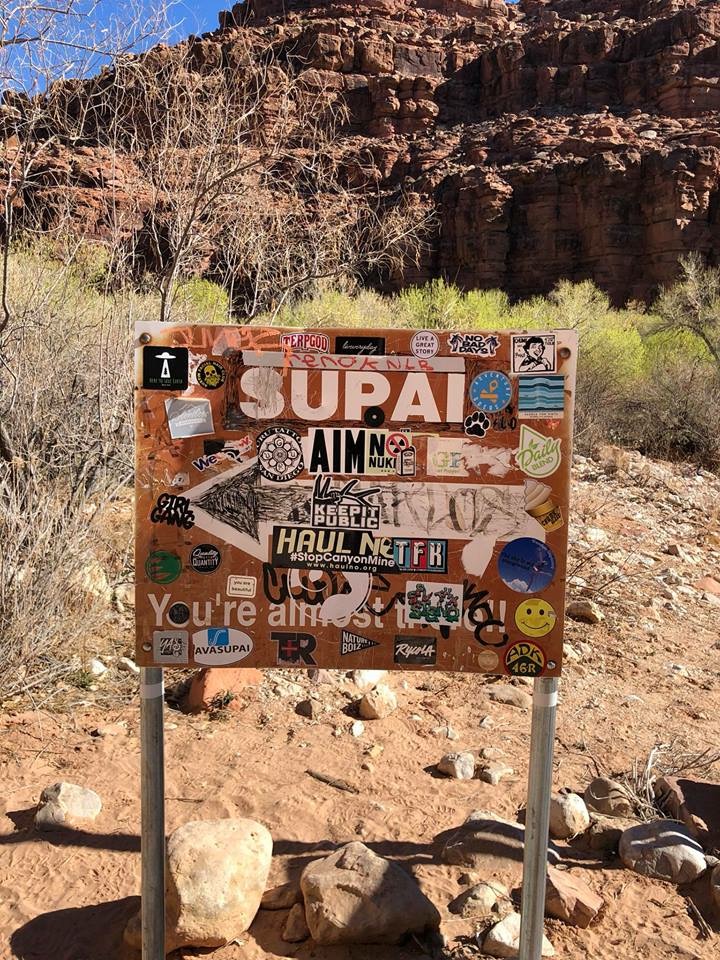
About a mile past Supai, we arrive at Fifty-Foot Falls, the first of five.
Next up is Navajo Falls. Stopping briefly at each for some pics, we press on toward the campground. The descent is much steeper now. Soon we arrive at the most famous of the falls, Havasu Falls.
I was worried that it wouldn’t be like the pictures, and it wasn’t. It was even more stunning in person. Magnificent turquoise water pouring over a massive limestone cliff hydrates the entrance to this lush canyon oasis located in the middle of a harsh desert landscape. The juxtaposition is incredible!
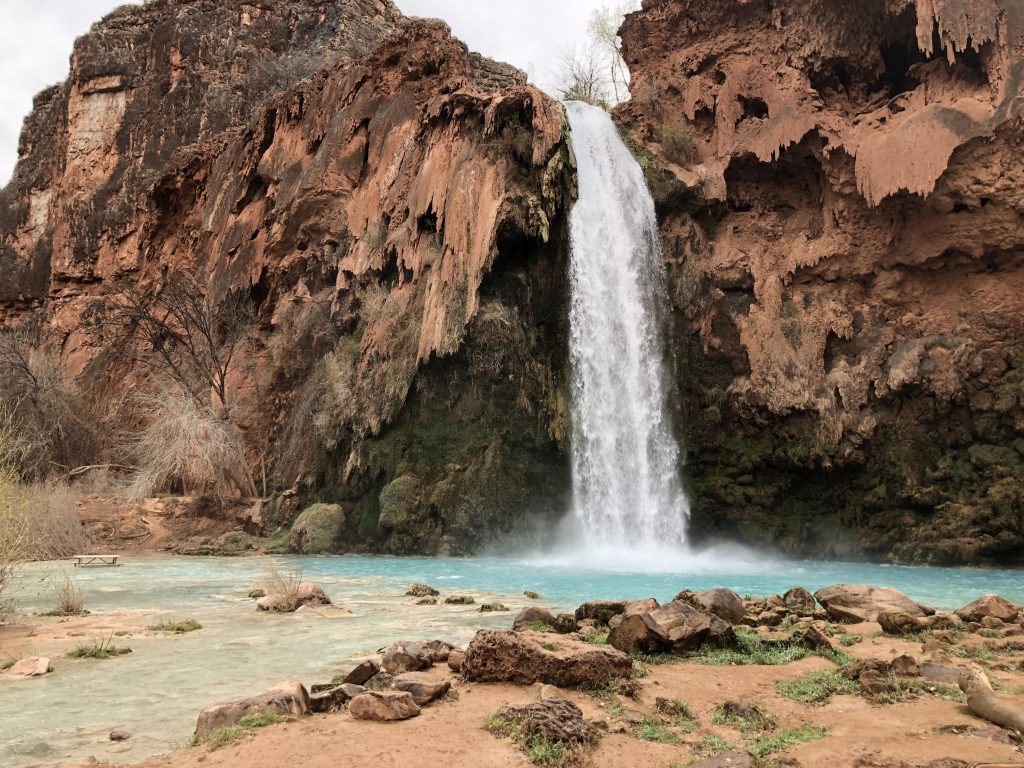
Exhausted, I climb into my tent after dinner and immediately fall asleep.
It’s only 7:30 pm. Darkness falls fast in this canyon. Waking up in the middle of the night, I unzip the tent flaps and peak out. It’s a sliver shy of a full moon, and there are millions of stars smeared across the sky. Pulling on my hat, some extra layers, and my boots, I step outside and make my way quietly through the campground, hiking back to Havasu Falls. It’s just me, and the scene is ethereal. I don’t know how long I sat there taking in the spectacular and ghostly view. My mind suggested it was a dream; my knees assured me that it wasn’t. Reluctantly, I head back to camp to rest for the next day’s exploration.
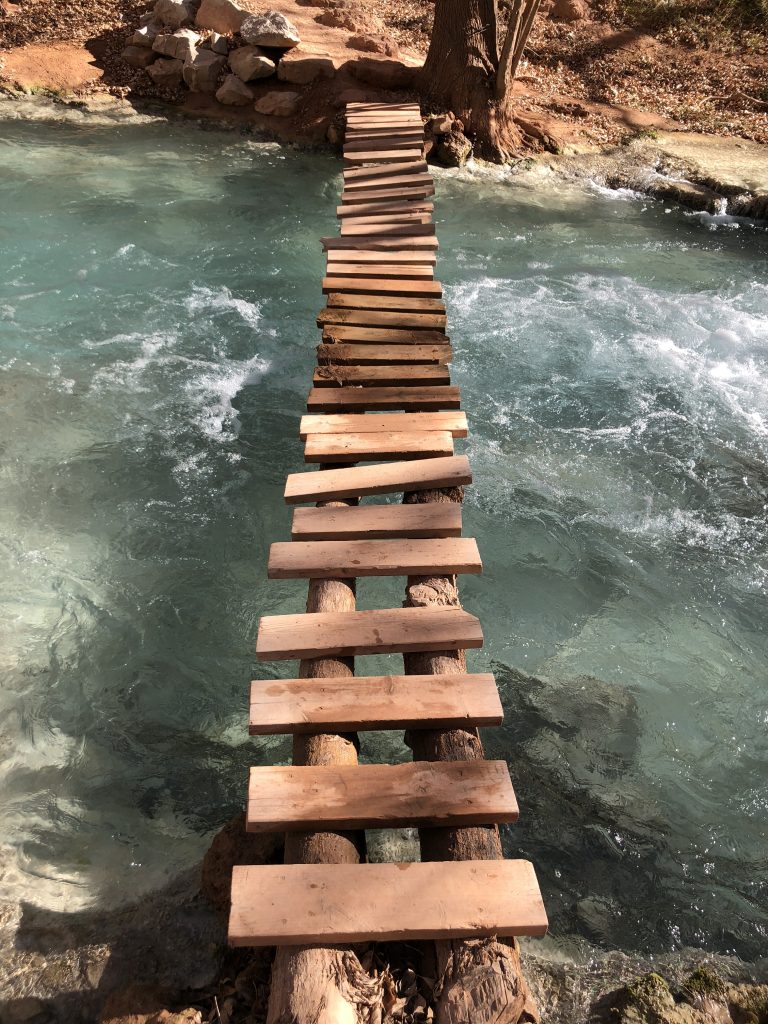
Day two finds us tackling Mooney Falls, the tallest and most forceful of the five.
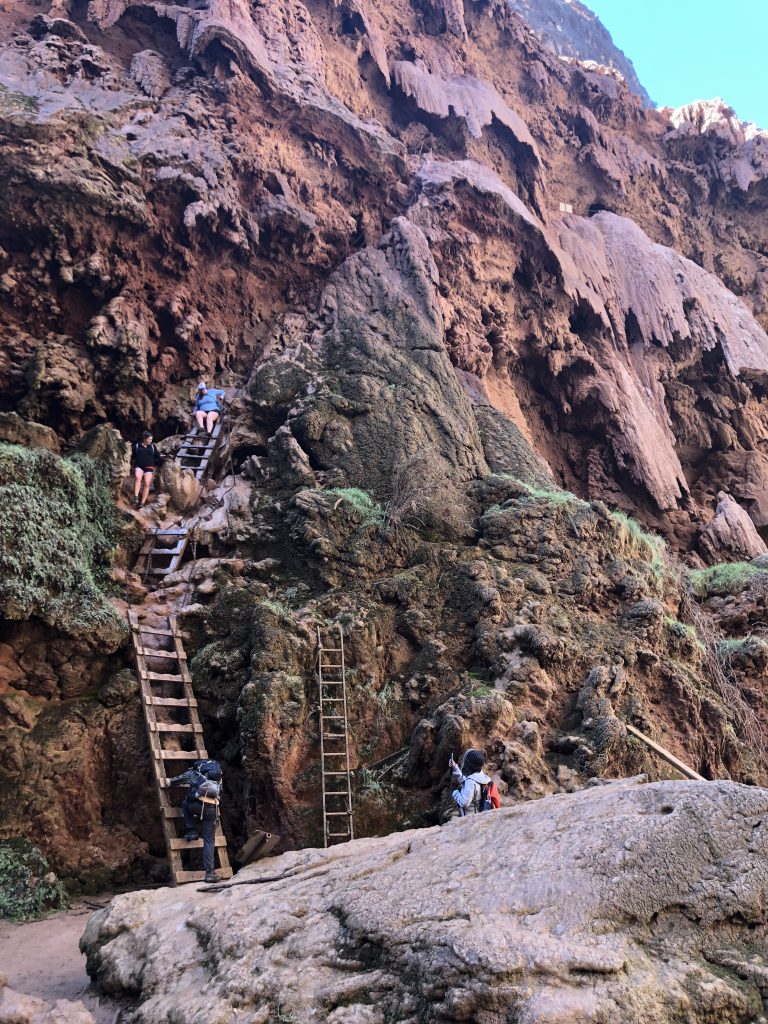
You may have seen the somewhat infamous tunnels and ladders that must be negotiated to get to the bottom of Mooney. Definitely daunting; completely worth it.
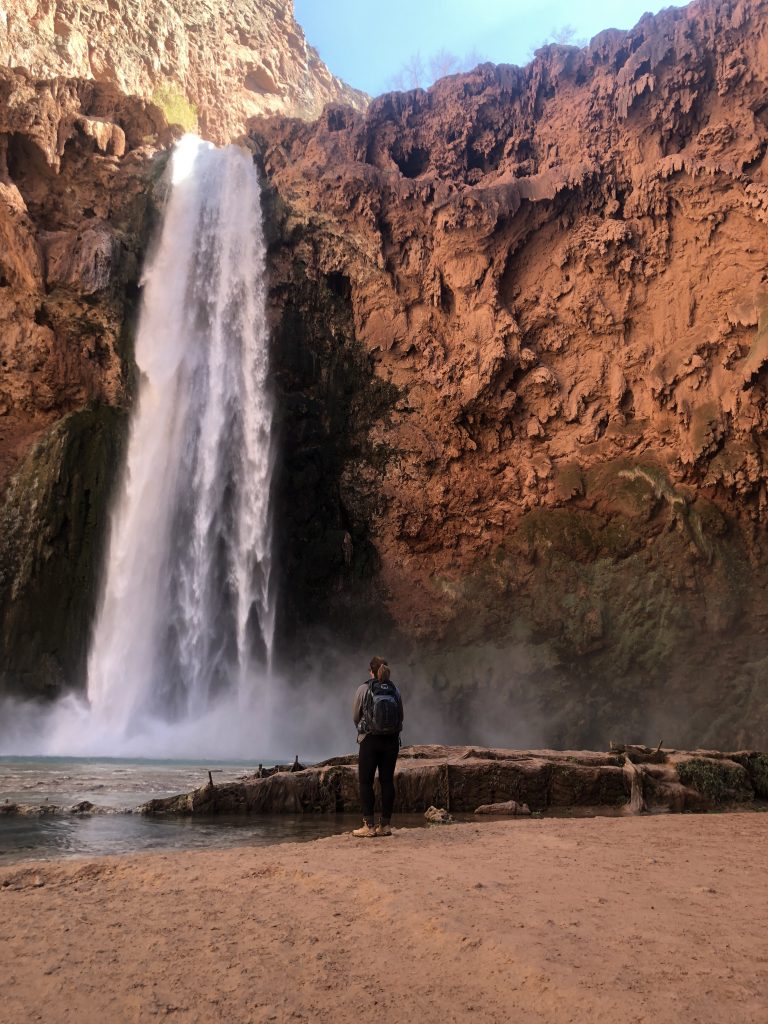
From here, you can trek further down the canyon to Beaver Falls; this involves several water crossings. It’s February, so we choose to head back to Fifty-Foot Falls for a picnic lunch. After, we’ll explore some of the side canyons looking for fossils and even visit an abandoned silver mine.
Night falls quickly, and we return to camp for dinner and rest before the hike out the next morning. Emily reminds me to grab a couple of snacks for my pack. We’ll leave right after breakfast and have lunch when we get back to the van.
What goes down must go back up.
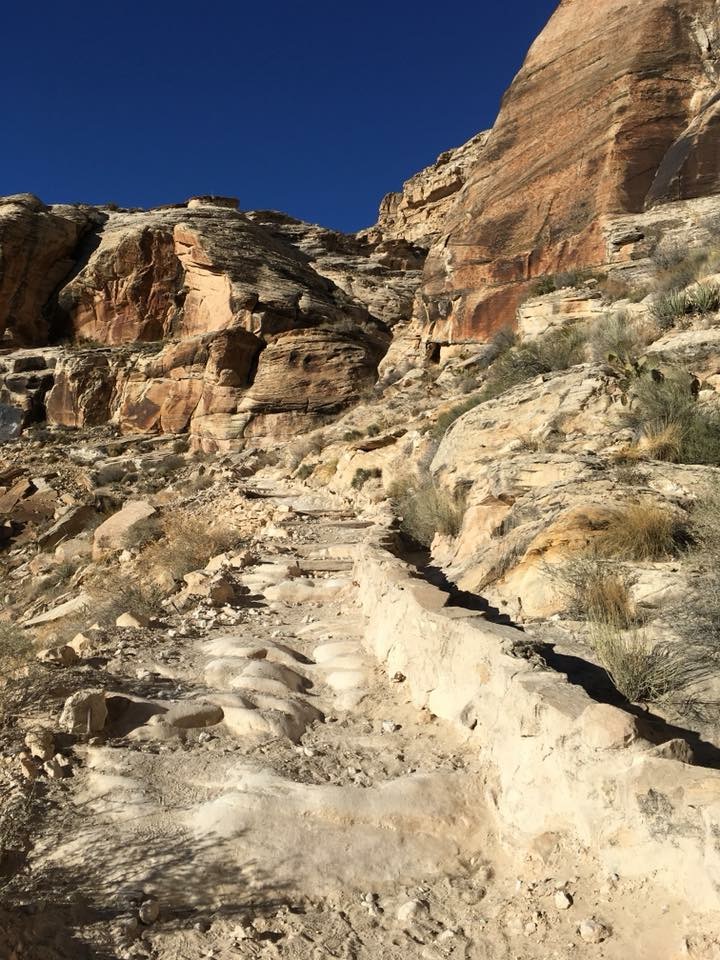
It’s relatively steep until we reach the village, where the trail levels out until the last mile and a half. This is where we begin to climb. Slow and steady wins the race, and before I know it, we’re back at the van eating lunch and heading back to Flagstaff.
I jump in the shower when I get back to the hotel and watch as the canyon dust turns the water a reddish-brown as it swirls down the drain. Tomorrow, I’ll make my way back to Phoenix and return to Alabama – at the end of an incredible adventure that I’ll never forget.

